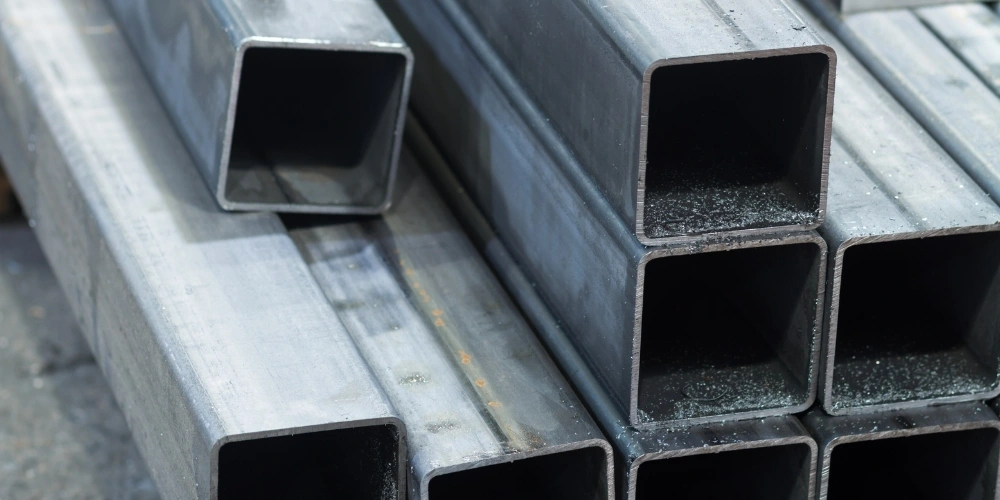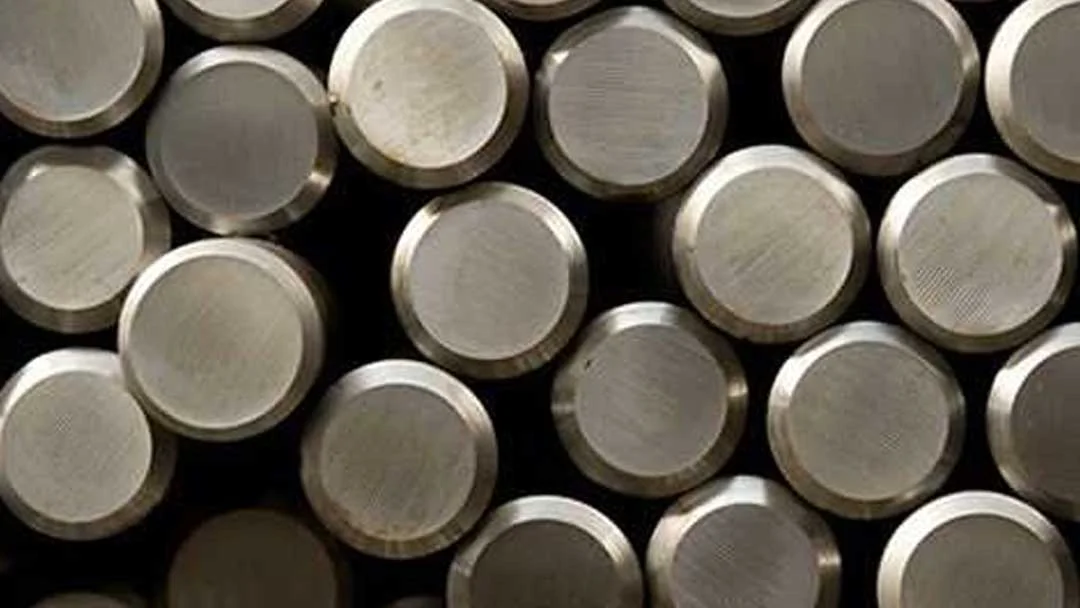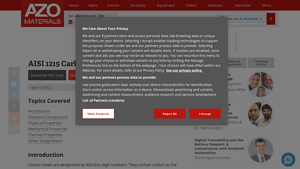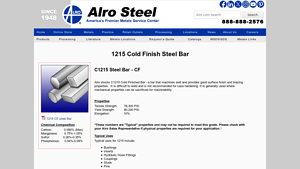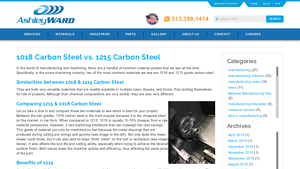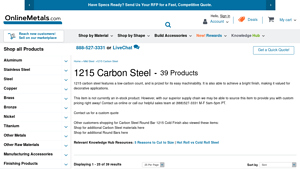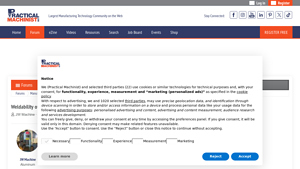1215 Carbon Steel Guide: Type, Cost, Top List…
Introduction: Navigating the Global Market for 1215 carbon steel
In today’s competitive landscape, sourcing 1215 carbon steel presents unique challenges for international B2B buyers, particularly those operating in regions like Africa, South America, the Middle East, and Europe. The difficulty lies not only in understanding the specific properties and applications of this versatile material but also in navigating the complexities of supplier selection and cost considerations. This guide aims to demystify the global market for 1215 carbon steel, providing insights into its characteristics, applications, and the critical factors to consider when sourcing from reliable suppliers.
From its excellent machinability, making it ideal for components such as pins, couplings, and fittings, to its limitations in weldability, this guide will cover the essential aspects of 1215 carbon steel. We will delve into the various types available, the industries that commonly utilize this material, and the best practices for vetting suppliers to ensure quality and reliability. Additionally, we will explore cost implications, helping you make informed purchasing decisions that align with your business objectives.
Empowering B2B buyers with comprehensive knowledge about 1215 carbon steel not only enhances procurement strategies but also fosters stronger supplier relationships. By understanding the intricacies of this material, buyers can confidently navigate the global market and secure the best options for their operational needs.
Understanding 1215 carbon steel Types and Variations
| Type Name | Key Distinguishing Features | Primary B2B Applications | Brief Pros & Cons for Buyers |
|---|---|---|---|
| 1215 Cold Drawn Steel Bar | Resulfurized and rephosphorized, excellent machinability | Automotive, construction, fittings | Pros: High machinability, good surface finish. Cons: Lower strength than other grades. |
| 1215 Free Machining Steel | Enhanced sulfur and phosphorus content for easy machining | Automatic screw machine operations | Pros: Ideal for high-volume production. Cons: Limited weldability and structural integrity. |
| 1215 Hexagonal Steel Bar | Available in hexagonal shape, tailored for specific fittings | Fasteners, bushings, pins | Pros: Custom shapes for specific applications. Cons: May require special ordering. |
| 1215 Round Steel Bar | Standard round shape, versatile for various applications | Shafts, couplings, automotive parts | Pros: Commonly available, versatile. Cons: Lower tensile strength compared to higher grades. |
| 1215 Square Steel Bar | Square profile for enhanced grip and specific machining needs | Tooling, construction components | Pros: Allows for better torque and grip. Cons: Limited applications compared to round bars. |
What Are the Characteristics and Suitability of 1215 Cold Drawn Steel Bar?
The 1215 Cold Drawn Steel Bar is notable for its resulfurized and rephosphorized composition, which enhances its machinability. This type is particularly suitable for manufacturing processes requiring tight tolerances and high-quality surface finishes, making it ideal for automotive and construction applications. When purchasing, buyers should consider the lower strength of this grade compared to other cold-drawn steels, as it may not be suitable for high-stress applications.
How Does 1215 Free Machining Steel Benefit B2B Buyers?
1215 Free Machining Steel is characterized by its high sulfur and phosphorus content, which significantly improves its machinability. This type is widely used in automatic screw machine operations due to its ease of machining and ability to produce intricate parts efficiently. However, buyers should be aware of its limited weldability and structural integrity, making it less suitable for applications where strength is critical.
What Are the Advantages of 1215 Hexagonal Steel Bar?
The 1215 Hexagonal Steel Bar is specifically designed for applications that require a hexagonal shape, providing enhanced grip and fit in various mechanical assemblies. This variation is commonly used in the production of fasteners and bushings. B2B buyers should note that while hexagonal bars can provide tailored solutions for specific applications, they may require special ordering and might not be as readily available as round bars.
In What Applications Is 1215 Round Steel Bar Commonly Used?
The 1215 Round Steel Bar is a versatile option for a wide range of applications, including shafts and couplings. Its standard round shape makes it easy to work with and widely available in various diameters. Buyers should consider that while it is commonly used and versatile, it has lower tensile strength compared to higher-grade steels, which may limit its use in high-load applications.
What Are the Key Features of 1215 Square Steel Bar?
The 1215 Square Steel Bar is designed for applications where a square profile is advantageous, such as tooling and construction components. This shape allows for better torque and grip in mechanical applications. However, its applications may be limited compared to round bars, and buyers should ensure that the square shape aligns with their specific project requirements before making a purchase.
Key Industrial Applications of 1215 carbon steel
| Industry/Sector | Specific Application of 1215 carbon steel | Value/Benefit for the Business | Key Sourcing Considerations for this Application |
|---|---|---|---|
| Automotive | Manufacturing of precision components | High machinability leads to cost-effective production | Ensure compliance with industry standards and specifications |
| Construction | Production of fittings and fasteners | Durable and reliable components enhance project longevity | Confirm availability of various sizes and shapes |
| Aerospace | Fabrication of bushings and pins | Lightweight yet strong materials improve performance | Source from certified suppliers to meet safety regulations |
| Oil and Gas | Creation of couplings and connectors | Robust materials withstand harsh environments | Assess the material’s resistance to corrosion and wear |
| Electronics | Production of electrical connectors | Precision components support enhanced functionality | Look for suppliers with a strong quality assurance process |
How is 1215 Carbon Steel Used in the Automotive Industry?
In the automotive sector, 1215 carbon steel is primarily utilized for manufacturing precision components such as gears, pins, and fittings. Its excellent machinability allows for efficient production processes, reducing manufacturing costs while maintaining high-quality standards. For international buyers, especially in Africa and South America, sourcing from suppliers who adhere to strict automotive industry specifications is crucial to ensure compatibility and performance in automotive applications.
What Role Does 1215 Carbon Steel Play in Construction?
In construction, 1215 carbon steel is favored for the production of fittings and fasteners due to its reliability and strength. These components are essential for structural integrity and ensure that projects meet safety standards. Buyers in the Middle East and Europe should consider suppliers that offer a variety of sizes and shapes to meet specific project requirements, as well as those who can provide certifications for material quality.
Why is 1215 Carbon Steel Important in Aerospace Applications?
The aerospace industry employs 1215 carbon steel for fabricating bushings and pins, which are critical for various aircraft components. The lightweight yet strong nature of this steel enhances overall performance and fuel efficiency. International buyers from regions like Europe should prioritize sourcing from certified suppliers who comply with aerospace safety regulations to guarantee the reliability of these components.
How is 1215 Carbon Steel Utilized in the Oil and Gas Sector?
In the oil and gas industry, 1215 carbon steel is used to create couplings and connectors that must withstand extreme conditions. The robustness of this material ensures durability and longevity in demanding environments. Buyers, particularly from South America and the Middle East, should evaluate suppliers based on their ability to provide materials with high resistance to corrosion and wear, which are critical for the longevity of applications in this sector.
What Benefits Does 1215 Carbon Steel Offer in Electronics Manufacturing?
In the electronics sector, 1215 carbon steel is used for producing electrical connectors that require precision and reliability. The high machinability of this steel allows manufacturers to create components that meet stringent performance criteria, enhancing the overall functionality of electronic devices. Buyers in Europe should focus on sourcing from suppliers that implement rigorous quality assurance processes to ensure the integrity and performance of these critical components.
3 Common User Pain Points for ‘1215 carbon steel’ & Their Solutions
Scenario 1: Challenges in Machining Precision Parts from 1215 Carbon Steel
The Problem: B2B buyers often require materials that can produce precision parts with minimal downtime. However, while 1215 carbon steel is known for its excellent machinability, it can present challenges when machining complex geometries. The high sulfur and phosphorus content that enhances its machinability can also lead to issues like tool wear and inconsistent surface finishes, especially in high-volume production environments. This can result in increased costs and delays, as additional time and resources are required to achieve the desired quality.
The Solution: To overcome these machining challenges, it is crucial for buyers to work with suppliers who provide detailed specifications and machining guidelines for 1215 carbon steel. Understanding the optimal cutting speeds, feed rates, and tooling materials is essential. Using high-speed steel (HSS) or carbide tools specifically designed for free-machining steels can significantly reduce tool wear and improve surface finish. Additionally, consider employing advanced machining techniques such as dry machining or using cutting fluids that enhance lubrication and cooling, which can help mitigate the effects of rapid tool wear. Partnering with a supplier that offers machining support or training can also be beneficial, ensuring your team is equipped with the knowledge to optimize the machining process effectively.
Scenario 2: Difficulty in Welding Applications with 1215 Carbon Steel
The Problem: Many B2B buyers mistakenly assume that 1215 carbon steel can be welded without complications due to its common usage in various applications. However, the material’s unique composition, which includes a higher sulfur content, can lead to significant welding difficulties, including poor weld integrity and susceptibility to cracking. This can create serious issues for manufacturers who require strong, reliable joints in their assemblies, especially in structural applications where safety is a concern.
The Solution: To address the welding challenges associated with 1215 carbon steel, buyers should consider alternative materials better suited for welding, such as 1018 carbon steel, which offers better weldability. If using 1215 is unavoidable, it’s vital to implement pre-weld treatments such as heating the material and using specific welding rods designed for high-sulfur steels. Conducting thorough joint preparation and post-weld heat treatment can also help in achieving a more reliable weld. Furthermore, engaging a welding specialist or providing training for your team on best practices for welding free-machining steels can enhance the quality and reliability of your welded assemblies.
Scenario 3: Misalignment Between Supply Chain and Production Needs
The Problem: Global supply chains are often complex and can lead to misalignment between material availability and production schedules. For businesses sourcing 1215 carbon steel, delays in delivery or inconsistencies in material specifications can disrupt production timelines and impact overall operational efficiency. This is particularly critical for industries like automotive and construction, where timely delivery of materials is essential for maintaining project schedules.
The Solution: To mitigate supply chain issues, B2B buyers should establish strong relationships with multiple suppliers of 1215 carbon steel to ensure a reliable flow of materials. It’s advisable to implement a Just-In-Time (JIT) inventory system, which can help balance the flow of materials with production needs, reducing excess inventory and storage costs. Regularly communicating with suppliers about your production schedules and potential changes can also help them anticipate your needs and adjust their deliveries accordingly. Furthermore, utilizing digital supply chain management tools can provide real-time visibility into inventory levels and order statuses, allowing for proactive management of potential disruptions.
Strategic Material Selection Guide for 1215 carbon steel
What Are the Key Properties of 1215 Carbon Steel?
1215 carbon steel is a resulfurized and rephosphorized grade, known for its excellent machinability. With a maximum carbon content of 0.09%, it is classified as a low-carbon steel, which contributes to its lower strength compared to other grades. The typical tensile strength ranges from 68,000 to 78,000 psi, and yield strength varies between 65,000 to 75,000 psi. While it offers good elongation properties (15-20%), it is not suitable for applications requiring high strength or structural integrity due to its inherent limitations.
What Are the Advantages and Disadvantages of Using 1215 Carbon Steel?
The primary advantage of 1215 carbon steel lies in its machinability, making it ideal for automatic screw machine operations and parts requiring heavy machining. Its low cost and availability in various shapes and sizes (hexagonal, square, round) further enhance its appeal for manufacturers. However, the drawbacks include poor weldability, which can compromise the integrity of welded joints. The elevated levels of sulfur and phosphorus can lead to challenges in applications where structural reliability is critical.
How Does 1215 Carbon Steel Impact Specific Applications?
1215 carbon steel is particularly well-suited for applications such as pins, couplings, fittings, bushings, and studs. Its compatibility with machining processes allows for the production of intricate parts with bright finishes. However, due to its limitations in strength and weldability, it is not recommended for high-stress applications or where safety is a concern. International buyers should consider these factors when selecting materials for their projects.
What Should International B2B Buyers Consider When Selecting 1215 Carbon Steel?
For international B2B buyers, particularly in regions like Africa, South America, the Middle East, and Europe, compliance with local standards such as ASTM, DIN, and JIS is crucial. Understanding the specific requirements for mechanical properties and chemical composition is essential to ensure that the material meets regulatory standards. Additionally, buyers should be aware of local market preferences and sourcing challenges, as these can impact the cost and availability of 1215 carbon steel.
| Material | Typical Use Case for 1215 Carbon Steel | Key Advantage | Key Disadvantage/Limitation | Relative Cost (Low/Med/High) |
|---|---|---|---|---|
| 1215 Carbon Steel | Automatic screw machine parts, bushings | Excellent machinability | Poor weldability, lower strength compared to other steels | Low |
| 1018 Carbon Steel | General-purpose manufacturing, structural applications | Good weldability and strength | Higher cost than 1215, less machinable | Medium |
| 12L14 Carbon Steel | Precision machining, fasteners | Superior machinability | Limited strength and toughness | Medium |
| A36 Carbon Steel | Structural applications, beams, plates | Good weldability and structural integrity | Heavier and more expensive than 1215 | Medium |
This analysis provides a comprehensive overview of 1215 carbon steel and its alternatives, highlighting key considerations for international B2B buyers. Understanding these factors can help ensure the selection of the most suitable material for specific applications.
In-depth Look: Manufacturing Processes and Quality Assurance for 1215 carbon steel
What Are the Typical Manufacturing Processes for 1215 Carbon Steel?
The manufacturing of 1215 carbon steel involves several key stages that ensure the material meets specific performance requirements for various applications. Understanding these stages can help B2B buyers assess the suitability of the steel for their needs.
What Are the Main Stages of Manufacturing 1215 Carbon Steel?
-
Material Preparation
The process begins with the selection of raw materials, typically in the form of scrap steel or pig iron. The chosen materials undergo initial inspections to ensure they meet quality standards. These materials are then melted in an electric arc furnace (EAF) or a basic oxygen furnace (BOF). The addition of alloying elements, such as sulfur and phosphorus, enhances the machinability of 1215 steel, making it suitable for precision applications. -
Forming Techniques
After melting, the molten steel is cast into billets or slabs. This can be done via continuous casting or ingot casting. Once solidified, the steel undergoes hot rolling or forging to shape it into the desired dimensions. Cold drawing is often employed afterward, particularly for producing cold-finished bars. This process not only refines the dimensions but also improves the surface finish and mechanical properties. -
Assembly and Machining
In many applications, 1215 carbon steel is used in the production of components that require extensive machining. The steel’s free-machining properties make it ideal for automatic screw machining, where precise and complex parts such as pins, couplings, and bushings are produced. CNC machining techniques are frequently utilized to achieve high precision and repeatability in manufacturing. -
Finishing Processes
The final stage in the manufacturing process typically involves finishing treatments, such as heat treatment or surface hardening, to enhance specific properties like wear resistance or hardness. Surface treatments may include anodizing or coating to protect against corrosion, depending on the end-use application. The choice of finishing techniques will depend on the final application requirements and environmental factors.
How Is Quality Assurance Implemented in 1215 Carbon Steel Production?
Quality assurance is crucial in ensuring that 1215 carbon steel meets international standards and customer specifications. B2B buyers should be aware of the various quality control measures employed throughout the manufacturing process.
Which International Standards Are Relevant for 1215 Carbon Steel?
Manufacturers of 1215 carbon steel often adhere to several international standards, including:
- ISO 9001: This standard focuses on quality management systems, ensuring that manufacturers can consistently provide products that meet customer and regulatory requirements.
- ASTM A108 and A576: These specifications outline the requirements for cold-finished and hot-rolled steel bars, respectively.
- CE Marking: In the European market, products must comply with various directives, and CE marking indicates conformity with health, safety, and environmental protection standards.
What Are the Key Quality Control Checkpoints?
Quality control in the manufacturing process typically involves several checkpoints:
-
Incoming Quality Control (IQC): Raw materials are inspected upon arrival at the manufacturing facility. This includes checking for chemical composition and physical characteristics to ensure they meet the required standards.
-
In-Process Quality Control (IPQC): Throughout the manufacturing process, regular inspections are conducted to monitor the quality of the work in progress. This may involve measuring dimensions, conducting hardness tests, and assessing surface finishes.
-
Final Quality Control (FQC): After the manufacturing is complete, final inspections are performed. This includes verifying mechanical properties through tensile testing, impact testing, and non-destructive testing methods to ensure the finished product meets specifications.
What Testing Methods Are Commonly Used for Quality Assurance in 1215 Carbon Steel?
B2B buyers should understand the various testing methods that can verify the quality of 1215 carbon steel:
- Chemical Analysis: Spectrometric techniques are used to ensure that the chemical composition aligns with specifications.
- Mechanical Testing: Tensile strength, yield strength, and elongation tests are conducted to evaluate mechanical properties.
- Non-Destructive Testing (NDT): Techniques like ultrasonic testing and magnetic particle inspection help identify internal and surface defects without damaging the product.
How Can B2B Buyers Verify Supplier Quality Control Practices?
B2B buyers should take proactive steps to ensure that their suppliers maintain high-quality standards. Here are some actionable strategies:
-
Supplier Audits: Conducting regular audits of suppliers can provide insights into their manufacturing processes, quality control measures, and adherence to international standards.
-
Requesting Quality Reports: Suppliers should be able to provide documentation related to quality control processes, including results from tests and inspections.
-
Third-Party Inspections: Engaging third-party inspection agencies can offer an impartial assessment of the supplier’s quality control practices and product compliance.
What Are the QC and Certification Nuances for International B2B Buyers?
When dealing with international suppliers, particularly from regions like Africa, South America, the Middle East, and Europe, B2B buyers should be mindful of certain nuances:
- Certification Recognition: Different regions may have varying standards and certifications. It is essential to ensure that certifications from suppliers are recognized in the buyer’s market.
- Cultural and Regulatory Differences: Understanding local regulations and cultural practices can aid in establishing effective communication and expectations regarding quality control.
- Documentation and Traceability: Ensure that all documentation related to materials and processes is complete and traceable. This is particularly important for compliance in regulated industries such as automotive and aerospace.
By understanding these manufacturing processes and quality assurance measures, B2B buyers can make informed decisions when sourcing 1215 carbon steel, ensuring that they select suppliers who meet their quality expectations and industry standards.
Practical Sourcing Guide: A Step-by-Step Checklist for ‘1215 carbon steel’
Introduction
This sourcing guide aims to provide B2B buyers with a comprehensive checklist for procuring 1215 carbon steel. This material, known for its excellent machinability, is commonly used in industries requiring precision parts. By following this checklist, you can ensure that your procurement process is efficient and aligned with your project requirements.
Step 1: Define Your Technical Specifications
Clearly outline the specifications needed for your 1215 carbon steel, including dimensions, shapes, and mechanical properties. Understanding the requirements for tensile strength, yield strength, and elongation will help in selecting the right product. Additionally, specify any surface finishes or treatments necessary for your application, as these can significantly impact performance.
Step 2: Research Potential Suppliers
Conduct thorough research to identify suppliers that specialize in 1215 carbon steel. Look for companies with a strong reputation in the industry and a proven track record of delivering quality materials. Utilize online directories, trade shows, and industry forums to gather information about potential suppliers.
Step 3: Evaluate Supplier Certifications
Before finalizing any agreements, verify that your chosen suppliers hold relevant certifications and adhere to industry standards. Certifications such as ISO 9001 indicate a commitment to quality management practices. This step ensures that you’re sourcing from reputable suppliers who prioritize product quality and reliability.
Step 4: Request Material Data Sheets (MDS)
Always request Material Data Sheets from your suppliers to understand the chemical composition and mechanical properties of the 1215 carbon steel they offer. This documentation is critical for confirming that the material meets your specifications and for ensuring compliance with industry standards. Pay attention to the levels of sulfur and phosphorus, as these can affect machinability and weldability.
Step 5: Compare Pricing and Terms
Obtain quotes from multiple suppliers to compare pricing and terms. While cost is a significant factor, consider the overall value, including lead times, payment terms, and shipping options. A lower price may not be beneficial if it comes with longer delivery times or poor customer service.
Step 6: Check References and Past Projects
Ask for references or case studies from the suppliers to gauge their experience with similar projects. Reach out to other businesses in your industry to understand their satisfaction levels with the supplier’s products and services. This step helps mitigate risks and ensures you partner with a reliable supplier.
Step 7: Negotiate Terms and Place Order
Once you’ve selected a supplier, engage in negotiations to finalize pricing, delivery schedules, and payment terms. Ensure that all agreements are documented in a contract to protect both parties. After finalizing terms, place your order, ensuring you keep communication lines open for any future updates or changes.
Following this checklist will streamline your procurement process for 1215 carbon steel, helping you secure the right materials for your business needs while minimizing risks associated with sourcing.
Comprehensive Cost and Pricing Analysis for 1215 carbon steel Sourcing
Understanding the cost structure of sourcing 1215 carbon steel is crucial for international B2B buyers aiming to optimize their purchasing decisions. The cost components include various elements such as materials, labor, manufacturing overhead, tooling, quality control (QC), logistics, and supplier margins. This comprehensive analysis provides actionable insights into how these factors influence pricing and sourcing strategies.
What are the Key Cost Components for 1215 Carbon Steel?
-
Materials: The primary cost driver for 1215 carbon steel is the raw material itself. Given its resulfurized and rephosphorized nature, the composition affects not only cost but also machinability. Prices fluctuate based on global steel market trends, demand, and availability of alloying elements.
-
Labor: Labor costs can vary significantly depending on the region. For instance, regions with high labor costs may see a higher overall price for 1215 carbon steel. This is particularly relevant for buyers in Europe compared to those in South America or Africa, where labor might be cheaper.
-
Manufacturing Overhead: This includes costs associated with production facilities, utilities, and equipment maintenance. Companies that invest in advanced manufacturing technologies may have higher overheads, which can be reflected in the pricing.
-
Tooling: The specific tooling required for machining 1215 steel is another cost factor. Given its free-machining properties, specialized tooling can enhance production efficiency but also adds to the initial investment.
-
Quality Control (QC): Ensuring compliance with international standards such as ASTM A108 and ASTM A576 is crucial. The costs associated with QC processes, including testing and certification, should be factored into the overall pricing.
-
Logistics: Shipping and handling costs can vary based on the distance from the supplier to the buyer’s location, as well as the chosen Incoterms. For international buyers, understanding these logistics costs is essential for accurate budgeting.
-
Margin: Supplier margins can vary based on competition, demand, and the supplier’s business model. Buyers should consider negotiating these margins to secure a more favorable price.
How Do Price Influencers Affect 1215 Carbon Steel Sourcing?
Several factors influence the pricing of 1215 carbon steel:
-
Volume/MOQ: Bulk orders typically lead to reduced per-unit costs. Buyers should leverage this to negotiate better pricing, especially when sourcing large quantities.
-
Specifications and Customization: Customized orders may incur additional costs. Buyers should clearly define their requirements to avoid unexpected expenses.
-
Quality and Certifications: Higher quality standards and certifications often lead to increased prices. Buyers must assess their quality requirements against their budget constraints.
-
Supplier Factors: Establishing a relationship with reliable suppliers can enhance pricing negotiations. Consider factors such as supplier reputation, delivery times, and service quality.
-
Incoterms: Understanding the implications of different Incoterms can help in budgeting logistics costs effectively. Terms like CIF (Cost, Insurance, and Freight) may offer more predictable pricing compared to FOB (Free on Board), which can lead to variable shipping costs.
What Buyer Tips Can Help Optimize Costs?
-
Negotiation Strategies: Engage in discussions with suppliers about pricing, especially for large orders. Be transparent about your budget and requirements to find common ground.
-
Focus on Total Cost of Ownership: Evaluate not just the purchase price but also the long-term costs associated with maintenance, operational efficiency, and potential downtime. This holistic view can lead to better investment decisions.
-
Consider Local Suppliers: For buyers in Africa or South America, sourcing from local suppliers can reduce logistics costs and lead times, enhancing overall efficiency.
-
Understand Pricing Nuances for International Buyers: Be aware of currency fluctuations and how they can impact pricing. Establish contracts that mitigate risks associated with exchange rates.
-
Request Indicative Pricing: Always ask suppliers for indicative prices based on current market conditions, but remember that these can fluctuate based on various factors.
In conclusion, a comprehensive understanding of the cost structure, pricing influencers, and strategic buying tips can empower international B2B buyers to make informed decisions when sourcing 1215 carbon steel. By carefully considering each component and leveraging negotiation opportunities, buyers can achieve more favorable outcomes in their sourcing endeavors.
Alternatives Analysis: Comparing 1215 carbon steel With Other Solutions
Introduction to Alternatives in Carbon Steel Selection
When selecting materials for manufacturing and machining applications, it’s essential to consider alternatives to common options like 1215 carbon steel. Different steel grades and materials can offer distinct advantages in terms of performance, cost, and suitability for specific applications. This analysis will compare 1215 carbon steel with two viable alternatives: 1018 carbon steel and 12L14 carbon steel. Each alternative presents unique characteristics that could better align with specific project requirements.
| Comparison Aspect | 1215 Carbon Steel | 1018 Carbon Steel | 12L14 Carbon Steel |
|---|---|---|---|
| Performance | Good machinability, lower strength (68,000-78,000 psi tensile strength) | Moderate machinability, higher strength (74,000-88,000 psi tensile strength) | Excellent machinability, lower strength (70,000-80,000 psi tensile strength) |
| Cost | Generally economical | Moderately priced | Slightly higher due to additional alloys |
| Ease of Implementation | Requires careful handling due to poor weldability | Easy to work with, good weldability | Excellent for machining, but poor weldability |
| Maintenance | Minimal maintenance required | Low maintenance | Minimal maintenance, but welding may require special techniques |
| Best Use Case | Precision parts in low-stress applications | Structural components, general machining | High-volume production, intricate parts requiring extensive machining |
Detailed Breakdown of Alternatives
What are the Benefits and Drawbacks of 1018 Carbon Steel?
1018 carbon steel is a versatile option widely used in various manufacturing processes. Its strength and weldability make it suitable for structural applications, while its moderate machinability allows for efficient processing. However, it may not achieve the same level of finish as 1215 or 12L14. Buyers seeking a balance between strength and ease of use will find 1018 a viable choice, especially for components that undergo welding.
How Does 12L14 Carbon Steel Compare to 1215?
12L14 carbon steel is often favored for its superior machinability, thanks to its lead content, which allows for smoother cutting and less tool wear. This makes it ideal for high-volume production of complex parts like gears and fittings. However, similar to 1215, 12L14 has poor weldability, which could limit its application in structural settings. It is a great alternative for projects focused on intricate machining but requires careful consideration regarding welding needs.
Conclusion: Choosing the Right Solution for Your Needs
In selecting the appropriate material for your project, consider the specific demands of your application. If machinability is paramount and the parts will not be welded, 12L14 may be the best choice. For structural integrity with good weldability, 1018 carbon steel is a solid alternative. Meanwhile, 1215 carbon steel serves well in applications where precision machining is essential but may not be suitable for high-stress or welded assemblies. By evaluating performance, cost, and application needs, B2B buyers can make informed decisions that align with their operational goals.
Essential Technical Properties and Trade Terminology for 1215 carbon steel
What Are the Key Technical Properties of 1215 Carbon Steel?
When considering 1215 carbon steel for various applications, understanding its technical properties is crucial for B2B buyers. Here are some critical specifications that define this material:
-
Material Grade:
1215 carbon steel, classified under AISI and UNS G12150, is a resulfurized and rephosphorized steel. This grade is specifically designed for excellent machinability, making it an ideal choice for parts that require precise manufacturing. -
Chemical Composition:
– Carbon (C): Maximum of 0.09%
– Manganese (Mn): 0.75% to 1.05%
– Phosphorus (P): 0.04% to 0.09%
– Sulfur (S): 0.26% to 0.35%
This unique blend of elements enhances the steel’s machining capabilities but may compromise its weldability, which is an essential consideration for applications involving assembly. -
Mechanical Properties:
– Tensile Strength: Ranges from 68,000 to 78,000 psi
– Yield Strength: Between 65,000 and 75,000 psi
– Elongation: 15% to 20% in 2 inches
– Brinell Hardness: 150 to 170 BHN
These properties determine how the material will perform under stress and its suitability for various applications, such as automotive and construction components. -
Machinability:
Due to its high sulfur and phosphorus content, 1215 carbon steel is considered free machining. This characteristic significantly reduces tool wear and improves production efficiency, making it ideal for automatic screw machine operations. -
Weldability:
While 1215 can be welded, it is generally not recommended for structural applications due to its susceptibility to poor weld quality. Understanding this limitation is essential for buyers to avoid potential failures in critical applications. -
Tolerance:
When sourcing 1215 carbon steel, buyers should be aware of industry tolerances, which can affect the final product’s dimensions and fit. Precise tolerances ensure that components will function as intended in their respective assemblies.
What Are Common Trade Terms Related to 1215 Carbon Steel?
Navigating the procurement of 1215 carbon steel also involves understanding industry jargon and trade terms. Here are some essential terms that B2B buyers should be familiar with:
-
OEM (Original Equipment Manufacturer):
This term refers to companies that produce parts or equipment that may be marketed by another manufacturer. Understanding the role of OEMs is vital for buyers looking to source components for larger systems. -
MOQ (Minimum Order Quantity):
This is the smallest amount of product that a supplier is willing to sell. For 1215 carbon steel, MOQs can be significant, impacting inventory management and cash flow for smaller businesses. -
RFQ (Request for Quotation):
An RFQ is a document sent to suppliers requesting pricing and terms for specific quantities of products. For B2B buyers, issuing an RFQ for 1215 carbon steel can facilitate competitive pricing and ensure that all specifications are met. -
Incoterms:
These are international commercial terms that define the responsibilities of buyers and sellers in global trade. Understanding Incoterms is crucial for buyers in Africa, South America, the Middle East, and Europe, as they dictate shipping responsibilities, risks, and costs. -
Lead Time:
This refers to the time taken from placing an order to the delivery of the product. For 1215 carbon steel, understanding lead times is essential for project planning and inventory management. -
Processing:
This term refers to the various methods used to shape and finish steel products, including cutting, machining, and heat treatment. Knowledge of processing techniques is important for buyers looking to ensure that the steel meets their specific application requirements.
Understanding these technical properties and trade terms equips B2B buyers with the insights necessary to make informed decisions when sourcing 1215 carbon steel.
Navigating Market Dynamics and Sourcing Trends in the 1215 carbon steel Sector
What Are the Current Market Dynamics and Key Trends Influencing the 1215 Carbon Steel Sector?
The global market for 1215 carbon steel is shaped by several driving factors, including the increasing demand for free-machining steels in various industries such as automotive, construction, and manufacturing. The trend towards automation and precision engineering is also propelling the use of 1215 steel, which is renowned for its excellent machinability. Notably, regions such as Africa and South America are witnessing a surge in manufacturing activities, leading to a higher demand for readily available steel materials that meet production needs efficiently.
Emerging technologies, such as advanced alloying techniques and improved processing methods, are enhancing the performance characteristics of 1215 carbon steel, making it more attractive to buyers. Moreover, the rise of e-commerce platforms for B2B sourcing is transforming how buyers access and procure materials. International buyers can now compare suppliers, evaluate product specifications, and negotiate terms more efficiently than ever before. This trend is particularly beneficial for buyers in regions like the Middle East and Europe, where access to diverse suppliers can significantly impact the supply chain.
Additionally, the growing focus on quality assurance and compliance with international standards is affecting purchasing decisions. Buyers are increasingly prioritizing suppliers that can provide detailed certifications and traceability of their materials, ensuring that they meet both local and global standards.
How Does Sustainability Influence the Sourcing of 1215 Carbon Steel?
Sustainability and ethical sourcing have become critical considerations for B2B buyers in the 1215 carbon steel sector. The environmental impact of steel production, characterized by carbon emissions and resource depletion, has prompted many companies to seek ‘green’ certifications and materials. This shift is particularly pertinent for buyers in Europe, where regulatory frameworks and consumer preferences are increasingly favoring sustainable practices.
Ethical supply chains are also gaining traction, as businesses recognize the importance of transparency and responsible sourcing. Buyers are encouraged to partner with suppliers who prioritize sustainable practices, such as recycling scrap steel and utilizing energy-efficient manufacturing processes. Certifications like ISO 14001 (Environmental Management) and LEED (Leadership in Energy and Environmental Design) can serve as indicators of a supplier’s commitment to sustainability.
Furthermore, the demand for low-carbon steel alternatives is on the rise, pushing suppliers to innovate and develop greener production methods. This trend not only aligns with global sustainability goals but also enhances the reputation of companies committed to ethical sourcing practices. For international B2B buyers, adopting sustainable procurement strategies can lead to long-term cost savings and improved market positioning.
What Is the Historical Context of 1215 Carbon Steel in the B2B Landscape?
The evolution of 1215 carbon steel can be traced back to its development as a free-machining grade, specifically designed to enhance machinability while maintaining sufficient mechanical properties. Historically, this grade has been favored in industries where precision and efficiency are paramount, such as in the production of fasteners, fittings, and automotive components. Over the years, advancements in metallurgy and processing techniques have improved the consistency and performance of 1215 steel, making it a staple in modern manufacturing.
As industries have evolved, so too has the application of 1215 carbon steel, adapting to meet the demands of increasingly sophisticated technologies. This adaptability has solidified its position in various sectors, ensuring that it remains a relevant and valuable material for international B2B buyers seeking reliable and efficient solutions.
Frequently Asked Questions (FAQs) for B2B Buyers of 1215 carbon steel
-
How do I determine the right specifications for 1215 carbon steel?
To determine the right specifications for 1215 carbon steel, consider the intended application and required mechanical properties. Key factors include tensile strength, yield strength, and elongation, which typically range from 68,000 to 78,000 psi for tensile strength. Additionally, assess compatibility with your machining processes, as 1215 is known for excellent machinability but has limited weldability. Consulting with suppliers about your specific needs can also help ensure you select the right grade and form for your project. -
What is the best application for 1215 carbon steel?
1215 carbon steel is best suited for applications requiring high machinability and precision, such as automatic screw machine operations. It is commonly used for manufacturing pins, couplings, fittings, and bushings. Its low carbon content provides a balance between ease of machining and sufficient mechanical properties for non-structural applications. For projects that involve heavy machining or require bright finishes, 1215 is an ideal choice. -
What are the key factors to consider when sourcing 1215 carbon steel internationally?
When sourcing 1215 carbon steel internationally, consider factors such as supplier reliability, product quality, and compliance with international standards like ASTM A108. Evaluate the supplier’s experience in your industry and their ability to meet your specific requirements, including customization options and delivery timelines. Additionally, assess their logistics capabilities, particularly for shipping to your location in Africa, South America, the Middle East, or Europe. -
What are the typical minimum order quantities (MOQ) for 1215 carbon steel?
Minimum order quantities for 1215 carbon steel can vary significantly by supplier, often starting at around 10,000 lbs. However, some suppliers may offer flexibility based on customer needs. It’s essential to communicate your requirements upfront, as this can influence pricing and lead times. Additionally, consider the total volume you may need for future projects, as larger orders can sometimes lead to cost savings. -
What payment terms should I expect when purchasing 1215 carbon steel?
Payment terms for purchasing 1215 carbon steel can vary widely among suppliers. Common terms include upfront payment, partial payment upon order confirmation, and balance upon delivery. It’s advisable to negotiate terms that align with your cash flow and project timelines. Be sure to clarify any additional fees, such as shipping or customs duties, to avoid unexpected costs. -
How can I ensure quality assurance when sourcing 1215 carbon steel?
To ensure quality assurance when sourcing 1215 carbon steel, request certifications from your supplier that confirm compliance with relevant industry standards. Consider conducting third-party inspections or audits of the manufacturing process, especially for larger orders. Additionally, ask for samples or test reports that demonstrate the material’s mechanical properties and chemical composition, ensuring they meet your specifications. -
What logistics considerations should I keep in mind when importing 1215 carbon steel?
When importing 1215 carbon steel, consider logistics factors such as shipping methods, customs clearance, and delivery timelines. Ensure your supplier can provide reliable shipping options that meet your project deadlines. It’s also crucial to understand the import regulations and tariffs applicable in your country, as these can significantly impact overall costs and delivery schedules. -
Is it advisable to customize 1215 carbon steel products?
Customizing 1215 carbon steel products can be advisable if your application requires specific dimensions, shapes, or mechanical properties not available in standard offerings. Discussing customization options with your supplier can lead to better fit and performance in your applications. However, keep in mind that customization may affect lead times and costs, so it’s essential to evaluate the trade-offs based on your project requirements.
Important Disclaimer & Terms of Use
⚠️ Important Disclaimer
The information provided in this guide, including content regarding manufacturers, technical specifications, and market analysis, is for informational and educational purposes only. It does not constitute professional procurement advice, financial advice, or legal advice.
While we have made every effort to ensure the accuracy and timeliness of the information, we are not responsible for any errors, omissions, or outdated information. Market conditions, company details, and technical standards are subject to change.
B2B buyers must conduct their own independent and thorough due diligence before making any purchasing decisions. This includes contacting suppliers directly, verifying certifications, requesting samples, and seeking professional consultation. The risk of relying on any information in this guide is borne solely by the reader.
Top 7 1215 Carbon Steel Manufacturers & Suppliers List
1. AISI – 1215 Carbon Steel
Domain: azom.com
Registered: 1999 (26 years)
Introduction: AISI 1215 Carbon Steel (UNS G12150) is a carbon steel designated by AISI four-digit numbers, containing carbon as the significant alloying element along with small quantities of molybdenum, chromium, nickel, aluminum, and copper. It has a chemical composition of: Iron (Fe) 98.42 – 98.95%, Manganese (Mn) 0.75 – 1.05%, Sulfur (S) 0.260 – 0.35%, Carbon (C) 0.090%, and Phosphorous (P) 0.040 – 0.090%. …
2. McMaster – Grade 1215 Steel
Domain: mcmaster.com
Registered: 1994 (31 years)
Introduction: This company, McMaster – Grade 1215 Steel, is a notable entity in the market. For specific product details, it is recommended to visit their website directly.
3. Alro – 1215 Cold-Finished Steel Bar
Domain: alro.com
Registered: 1996 (29 years)
Introduction: {“product_name”: “1215 Cold-Finished Steel Bar”, “chemical_composition”: {“carbon”: “0.090% (Max)”, “manganese”: “0.75%-1.05%”, “sulfur”: “0.26%-0.35%”, “phosphorous”: “0.04%-0.09%”}, “properties”: {“tensile_strength”: “78,300 PSI”, “yield_strength”: “60,200 PSI”, “elongation”: “10%”}, “typical_uses”: [“Bushings”, “Inserts”, “Hydraulic Hose Fittings”, “Couplings”, “Studs”, “Pins”], “welding”: “Dif…
4. Ashley Ward – 1018 Carbon Steel
Domain: ashleyward.com
Registered: 1999 (26 years)
Introduction: 1018 Carbon Steel: Most popular and cheapest steel in bar form; 10-15% cheaper than 1215; machining limitations due to stringy and gummy metal shavings; slower cycle times; affects tool life and cutting ability; suitable for bending, welding, or case hardening; ideal for parts like spacers, studs, rivets, pins, and shafts. 1215 Carbon Steel: Not as cheap as 1018 but offers 25-40% overall cost redu…
5. Castle Metals – Carbon 1215 Round Bar
Domain: castlemetals.com
Registered: 1996 (29 years)
Introduction: {“item_number”:”1113″,”grade”:”Carbon 1215″,”shape”:”Round”,”temper”:”Cold Drawn”,”size”:”2.25 IN Round”,”length_range”:”120.0000-144.0000 IN”,”specifications”:{“AISI”:”1215″,”UNS”:”G12150″,”ASTM”:”A108″},”weight_per_foot”:”13.52 LBS/FT”,”availability”:”In Stock”,”cutting_options”:[“Cut in Half”,”Cut in Thirds”,”Cut in Fourths”],”length_tolerance”:{“positive”:”+ 0.125 INCH”,”negative”:”- 0.000 INC…
6. Online Metals – 1215 Carbon Steel
Domain: onlinemetals.com
Registered: 1997 (28 years)
Introduction: 1215 Carbon Steel features a low-carbon count, prized for its easy machinability and ability to achieve a bright finish, making it valuable for decorative applications. This item is not currently in stock but can be sourced for custom pricing. Contact available via online or phone (888)527-3331 M-F 5am-5pm PT. Key features include: FREE MTR available, options for smaller lengths to save on shippin…
7. Practical Machinist – 1215 Free Machining Steel
Domain: practicalmachinist.com
Registered: 2000 (25 years)
Introduction: 1215 is a free machining steel that is generally considered difficult to weld due to its chemical composition. Key elements include: C (Carbon) 0.09% max, Mn (Manganese) 0.75-1.05%, P (Phosphorus) 0.04-0.09%, and S (Sulfur) 0.26-0.35%. While some users report being able to weld 1215, it is not recommended for structural applications due to potential issues with weld integrity and strength. Alterna…
Strategic Sourcing Conclusion and Outlook for 1215 carbon steel
In summary, 1215 carbon steel presents unique advantages for industries requiring high machinability and cost-effective solutions. Its composition, enriched with sulfur and phosphorus, enhances its performance in automatic screw machine operations, making it ideal for applications like pins, couplings, and bushings. However, buyers should be aware of its limitations, particularly regarding weldability, which can compromise structural integrity if not handled properly.
Strategic sourcing of 1215 carbon steel entails understanding these characteristics to optimize procurement processes and ensure quality in production. By forging partnerships with reputable suppliers who stock and provide the necessary certifications, businesses can achieve better pricing and reliability.
Looking ahead, the demand for efficient machining solutions will likely grow, making 1215 carbon steel a critical material in various sectors, including automotive and construction. International buyers from Africa, South America, the Middle East, and Europe are encouraged to evaluate their sourcing strategies and consider integrating 1215 carbon steel into their supply chains. Taking proactive steps now can position your business advantageously in an increasingly competitive market.
